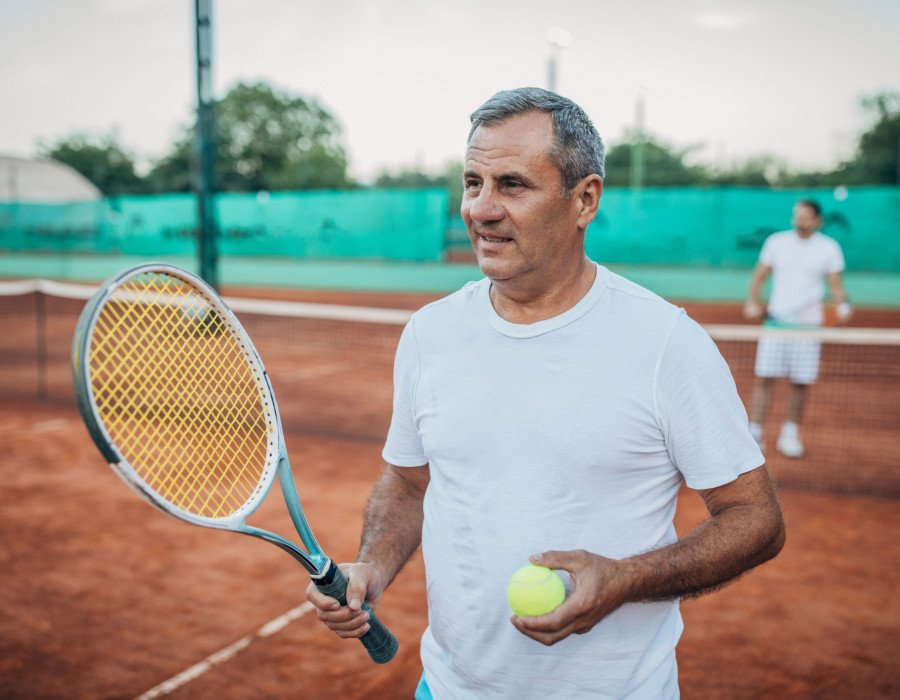Fitness and Performance
Common tennis injuries – and how to avoid them

When you play sport, you test your body, and can experience pain and injury as a result. In this blog, we’ll run through the most common tennis injuries and how you can avoid them.
You might experience long-lasting pain, or you might find it lasts just a couple of minutes. Even those small, short-lived niggles can indicate an injury in need of treatment. And over time, lots of small niggles can add up to potentially debilitating pain.
Professional tennis players are fortunate enough to have physios on their team to help them round the clock. For recreational players, it pays to understand what injuries you’re most likely to get while playing tennis, what you can do to prevent them and keep on playing.
Shoulder injuries
Swinging your racket places significant demands on your shoulder joint. You might notice a severe, sharp pain just after a racket swing during a game. This may indicate an acute injury, (e.g. sprain/strain/tear). Alternatively you might find that you develop a dull ache soon after, that lingers for a day or two. This may indicate wear and tear or overuse.
Some of the most common shoulder issues include rotator cuff tears and tendinopathies, bursitis, acromioclavicular joint injuries and shoulder impingement.
Ankle and calf injuries
The constant directional changes, jumps and powerful ankle movements that you carry out during a game of tennis can lead to injury.
Landing on your foot awkwardly can cause a sprain as you overstretch the side of your ankle. Calf pain, including pain the Achilles tendon, is common too.
Elbow pain (or tennis elbow)
Tennis elbow is a burning pain in the tendons on the outside of the elbow. Gripping the racquet too tightly is often the cause, as this can lead to inflammation.
How do I prevent tennis injuries?
Tennis is fantastic for muscle strengthening – but that doesn’t mean that simply playing tennis is enough to avoid injury and maximise mobility.
Warm-ups, cool-downs and strengthening exercises are all vital to injury prevention in tennis. It’s important to have the right gear too. Supportive footwear alone, for example, will probably reduce your chances of spraining an ankle, but ankle stability, mobility and proprioceptive training are even more important.
Mobility drills before a game will help you improve the range of movement in your joints and help you move more efficiently. Strengthening exercises will increase the strength and stability of your joints and muscles, decreasing the risk of injuries and improving your performance on court. You can take a look at some physio recommended exercises here.
Your posture can also impact on your movement when you play tennis. This is particularly worth being aware of if you have a desk job, or work hunched over a laptop. Poor posture can change the way you move when you play tennis. You might not have a full range of movement in your shoulders, and this can lead to shoulder injury. Spending too much time sitting can also lead to stiffness in the back of the thigh, making you prone to hamstring strain.
How we can help
We’ll carry out a comprehensive biomechanical and strength assessment. This is designed to help you recover from injuries, reduce the risk of them happening again and improve your performance on court. You’ll learn to prepare your body for the demands you place on it when playing.